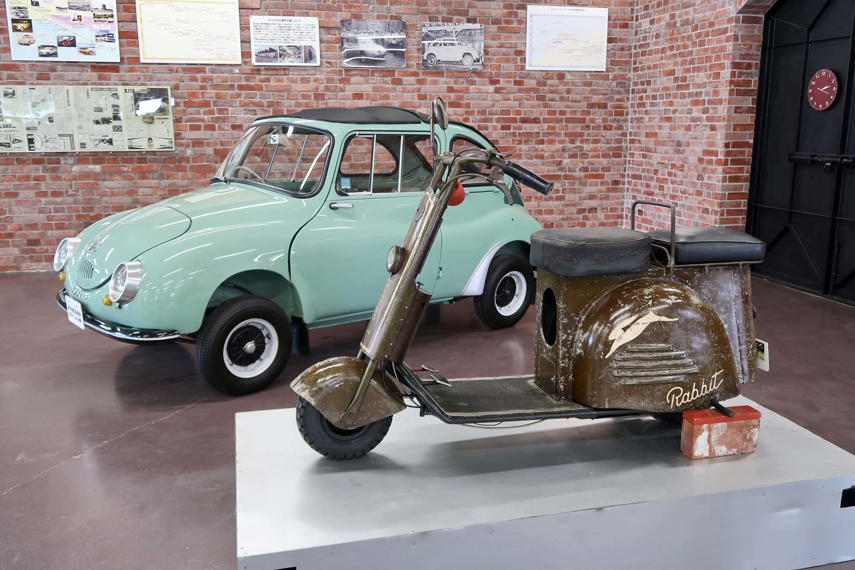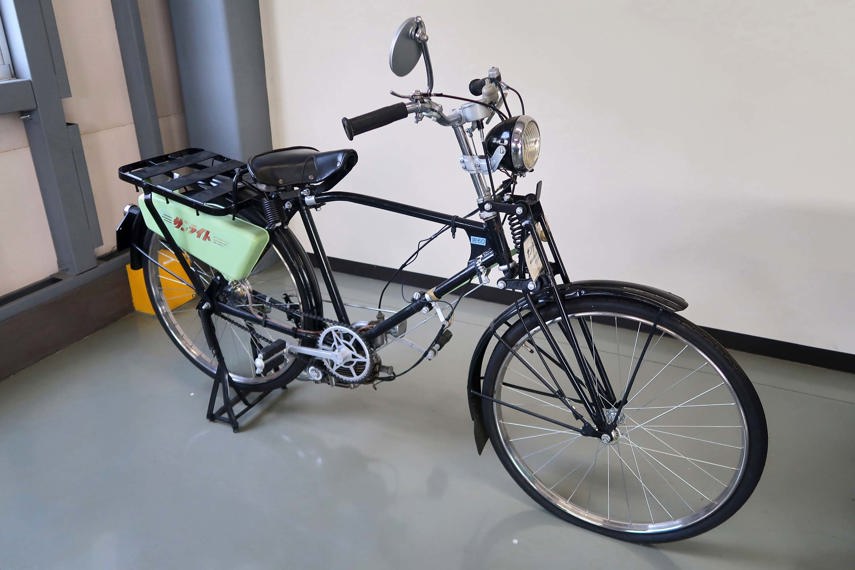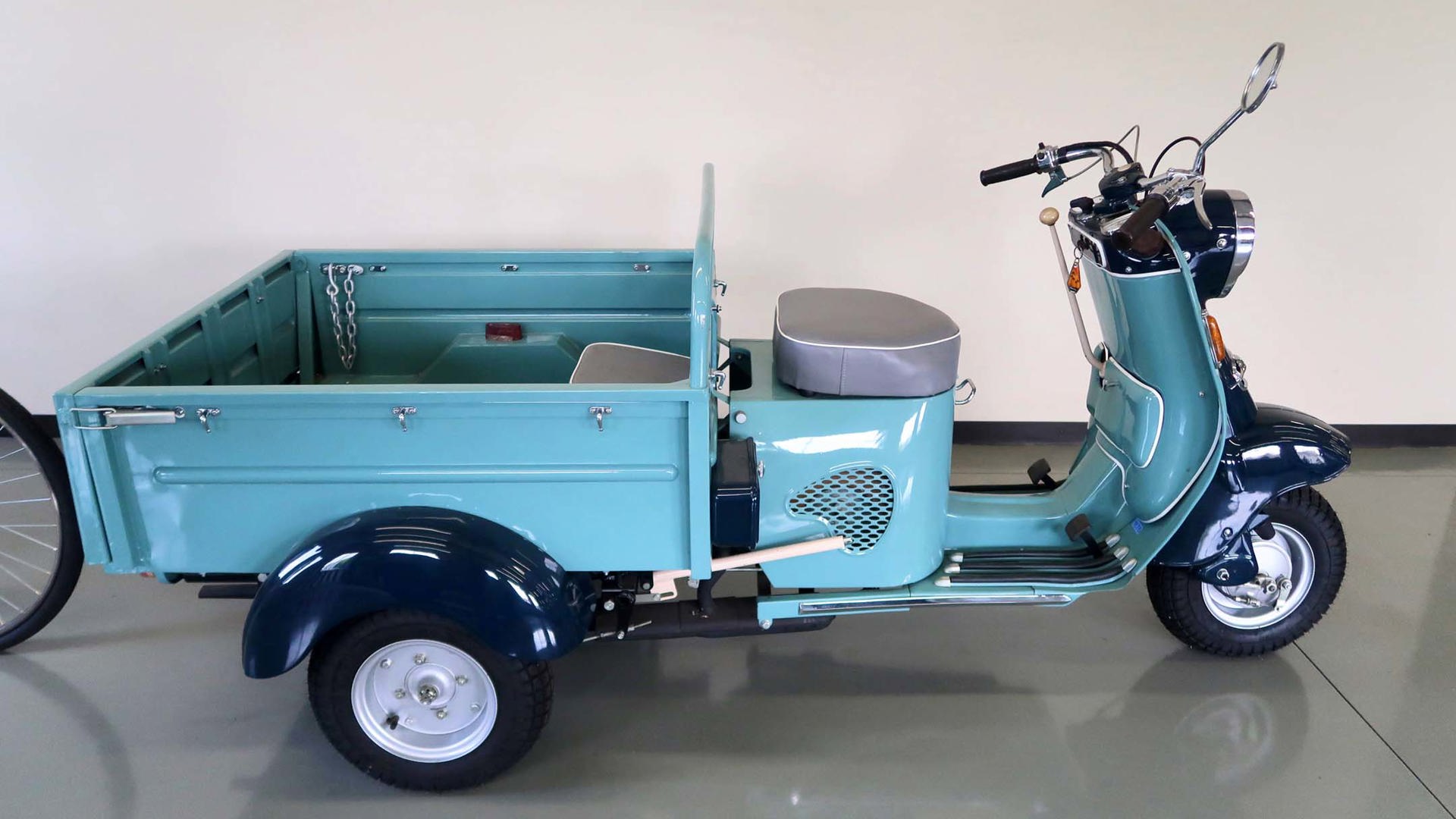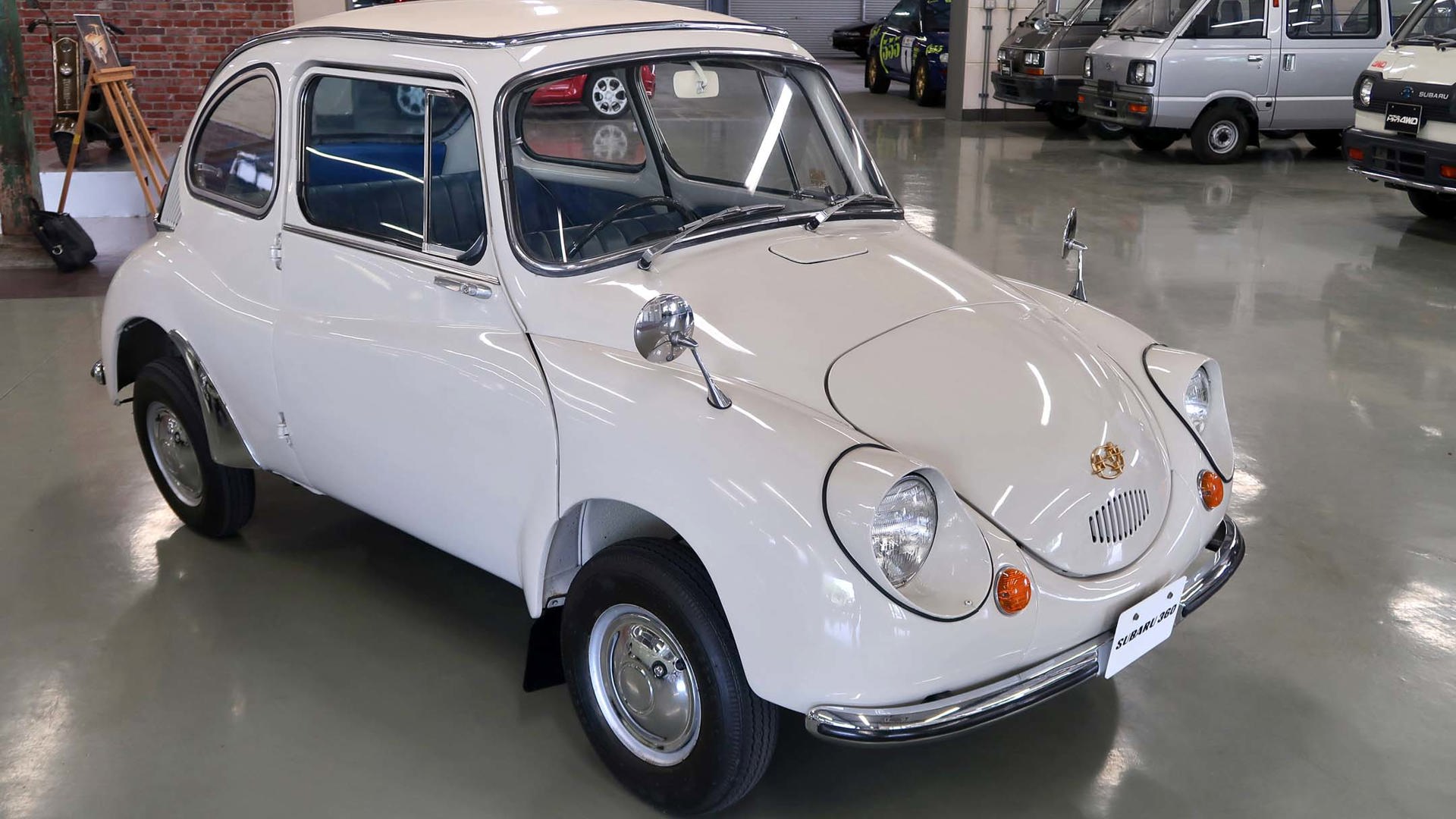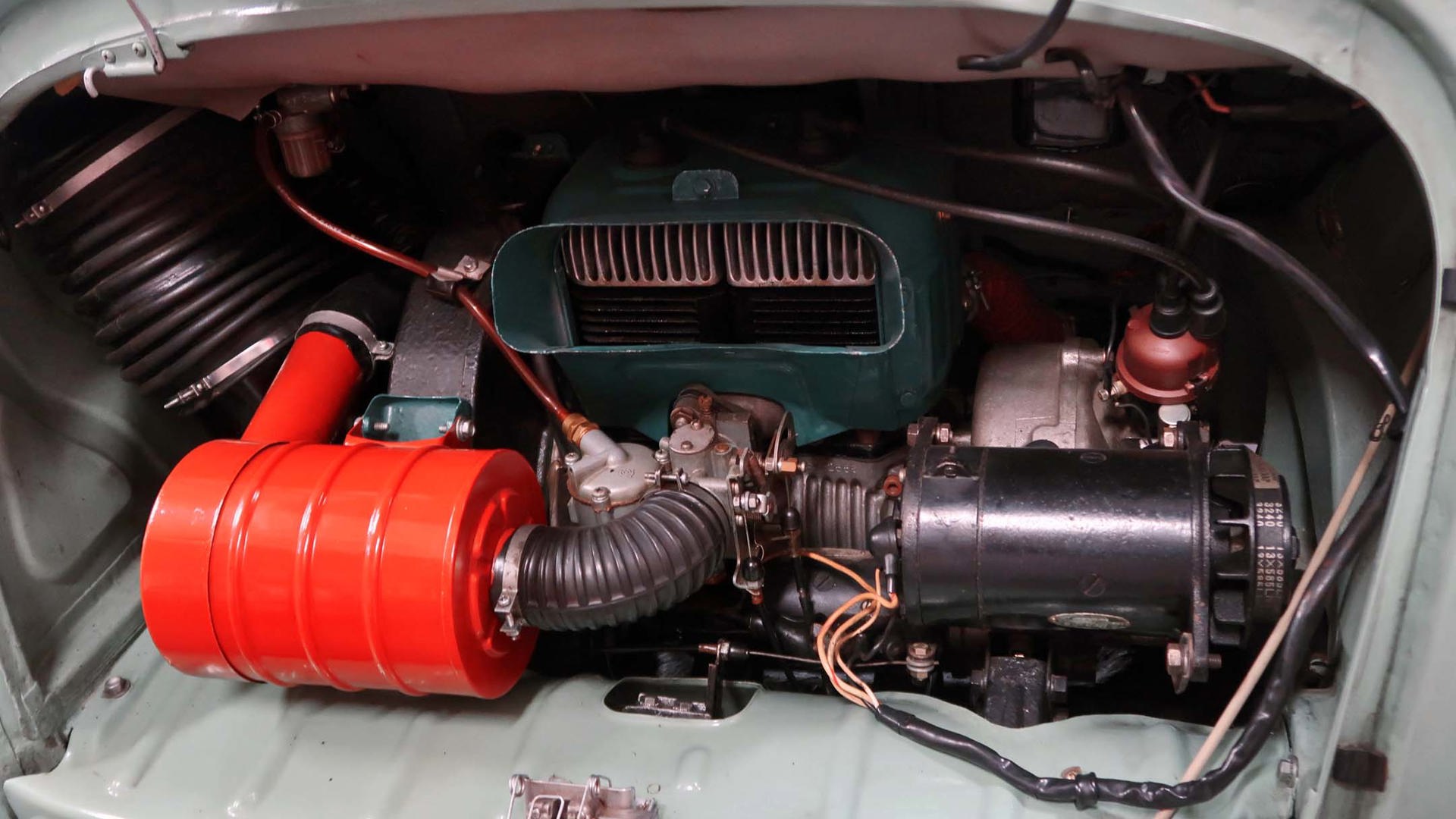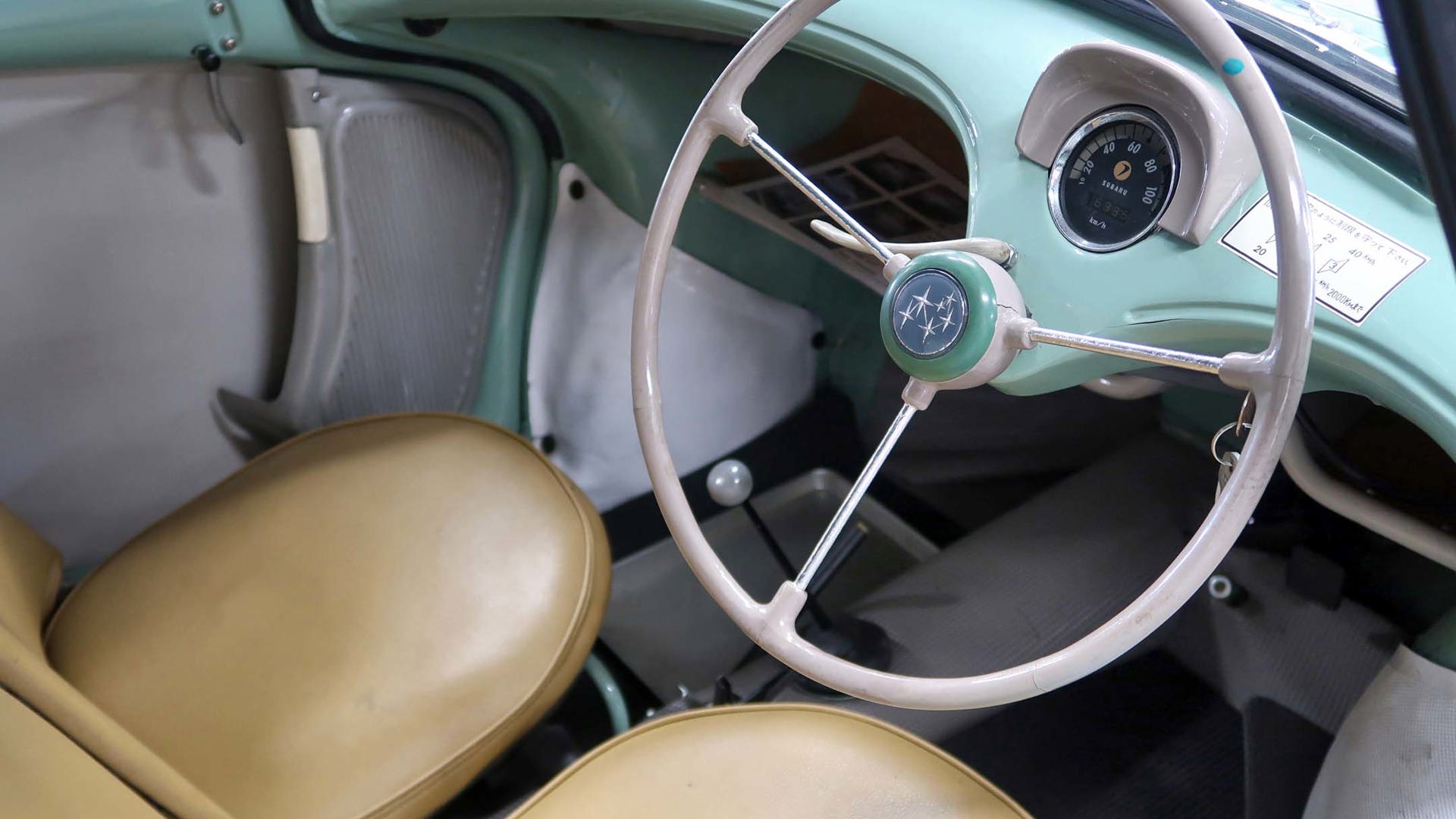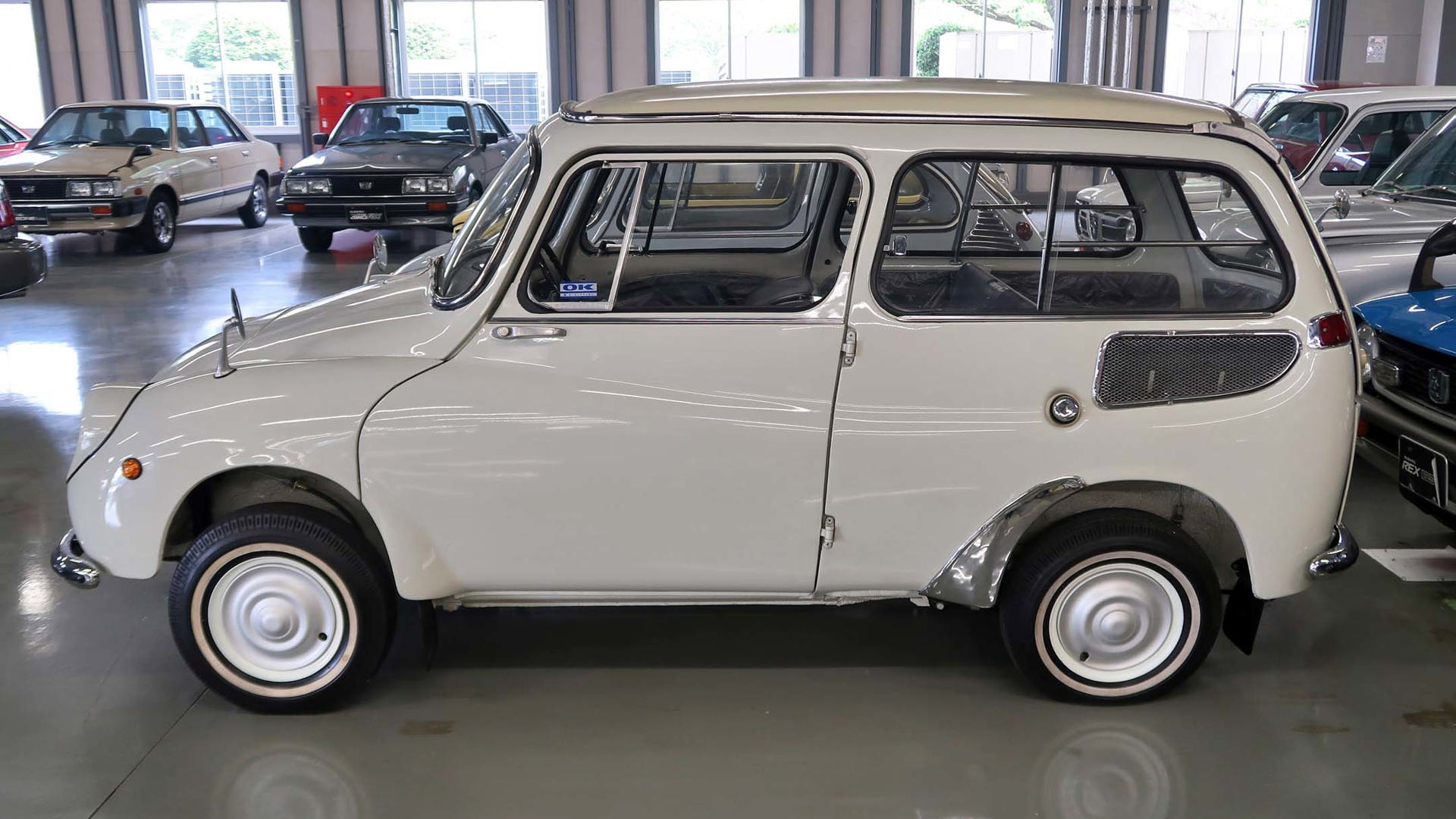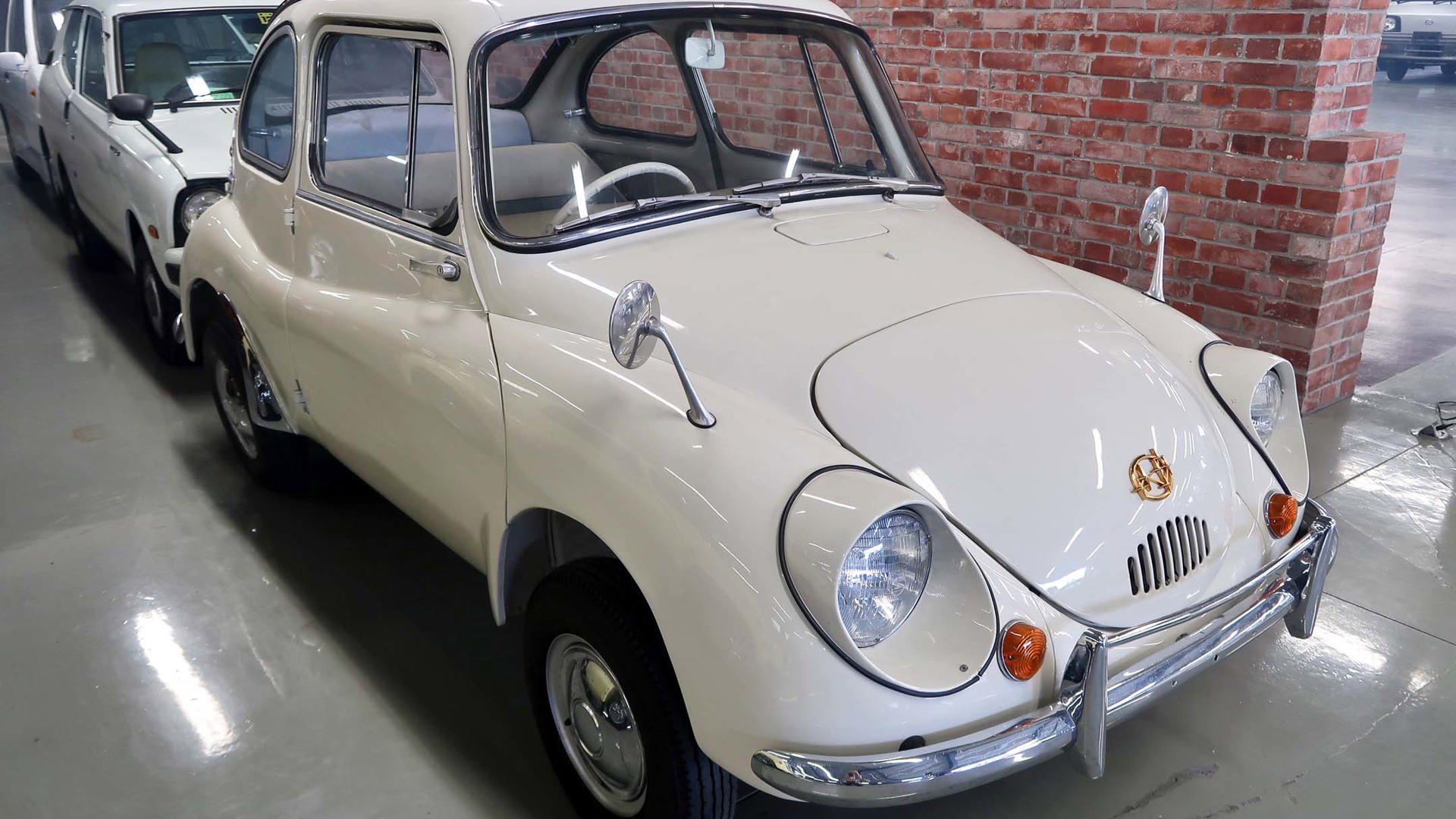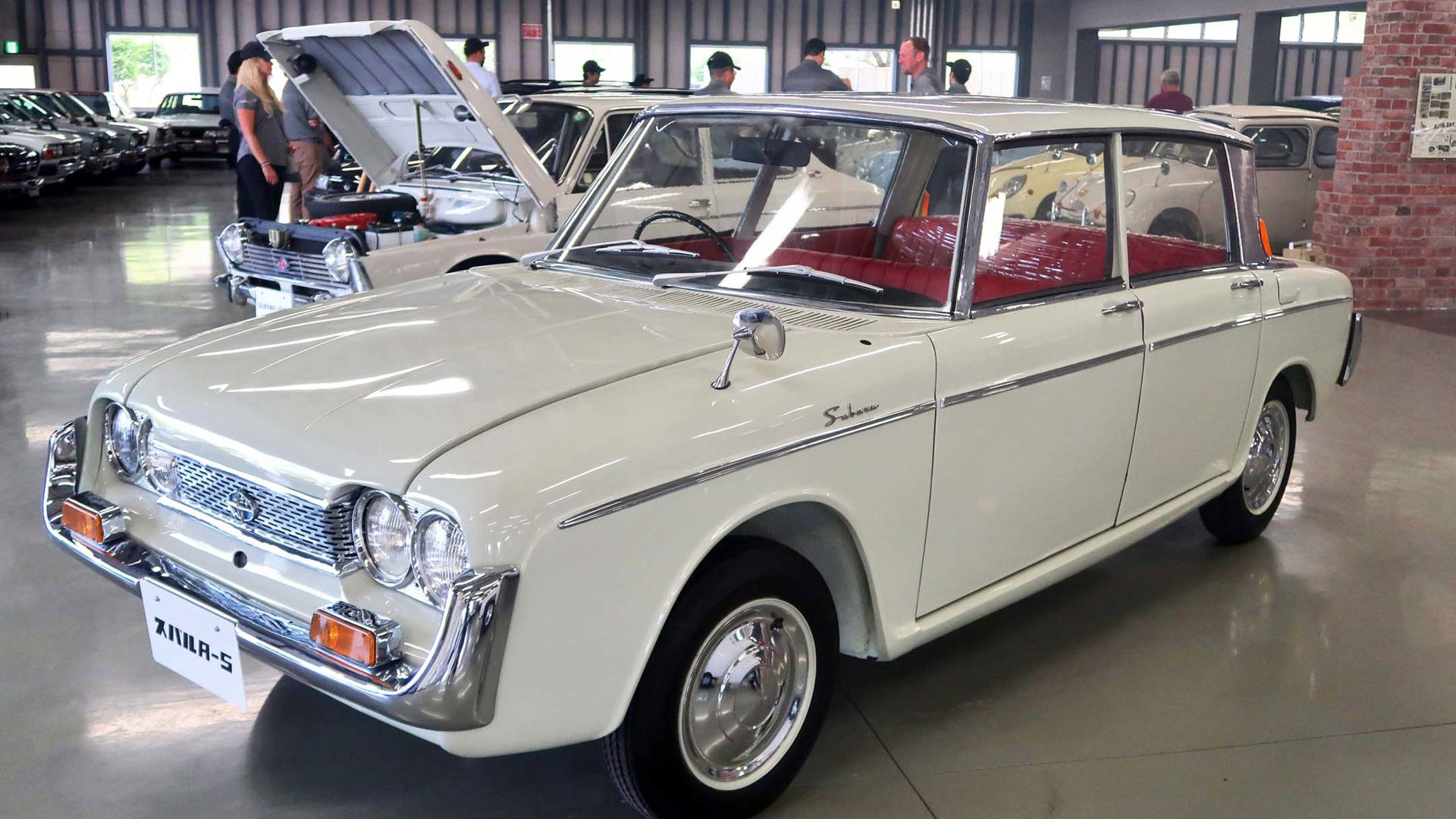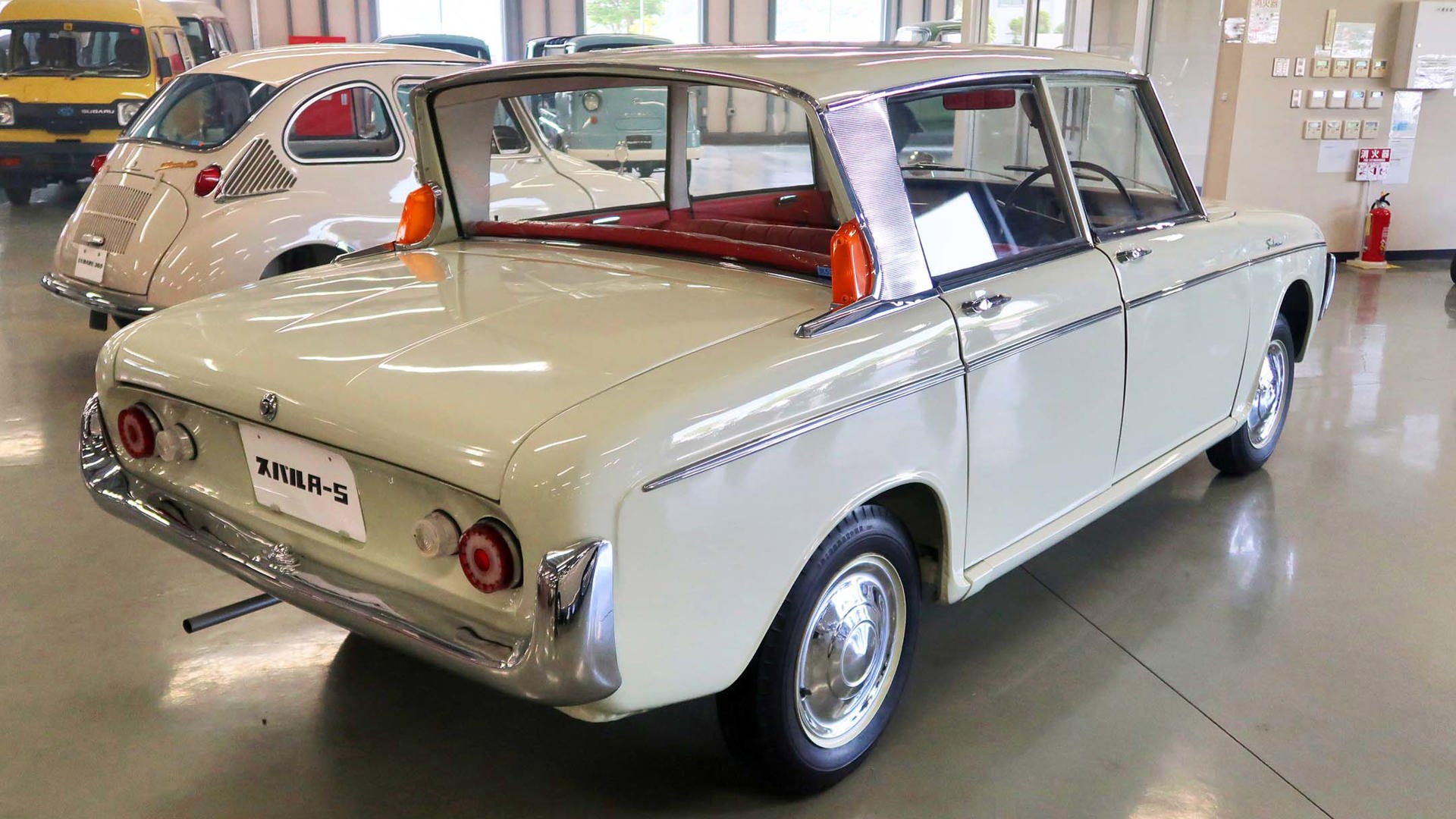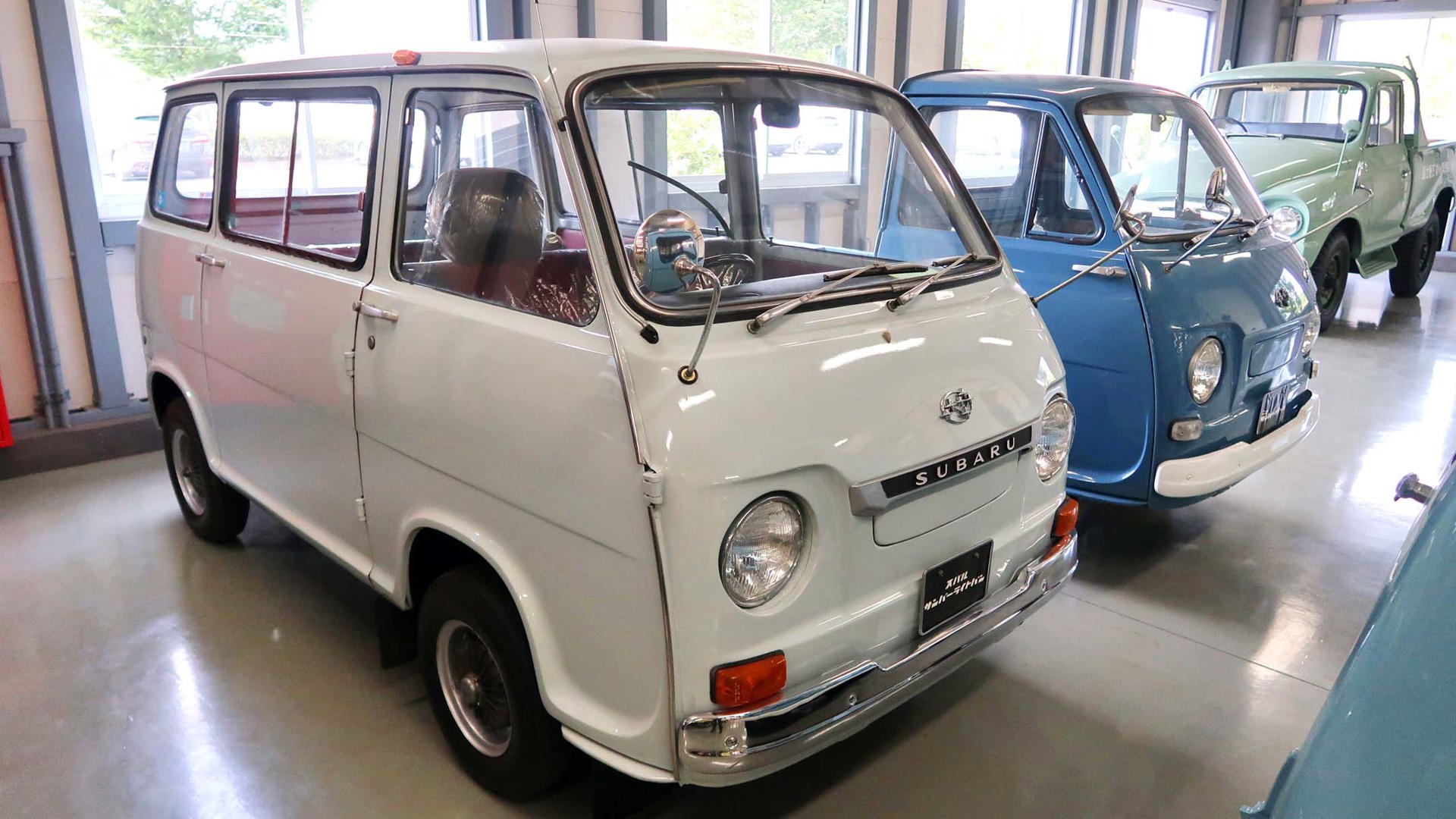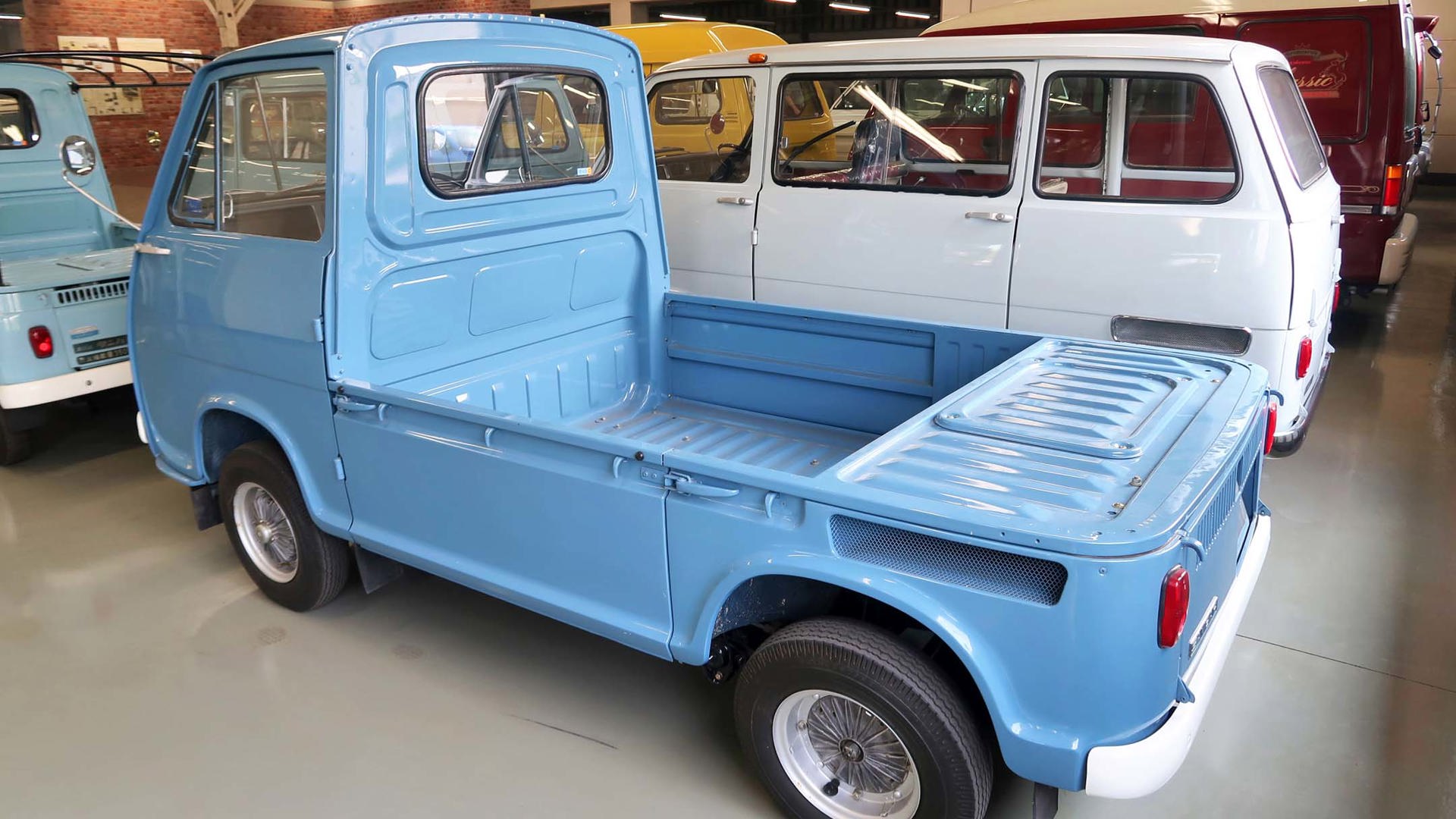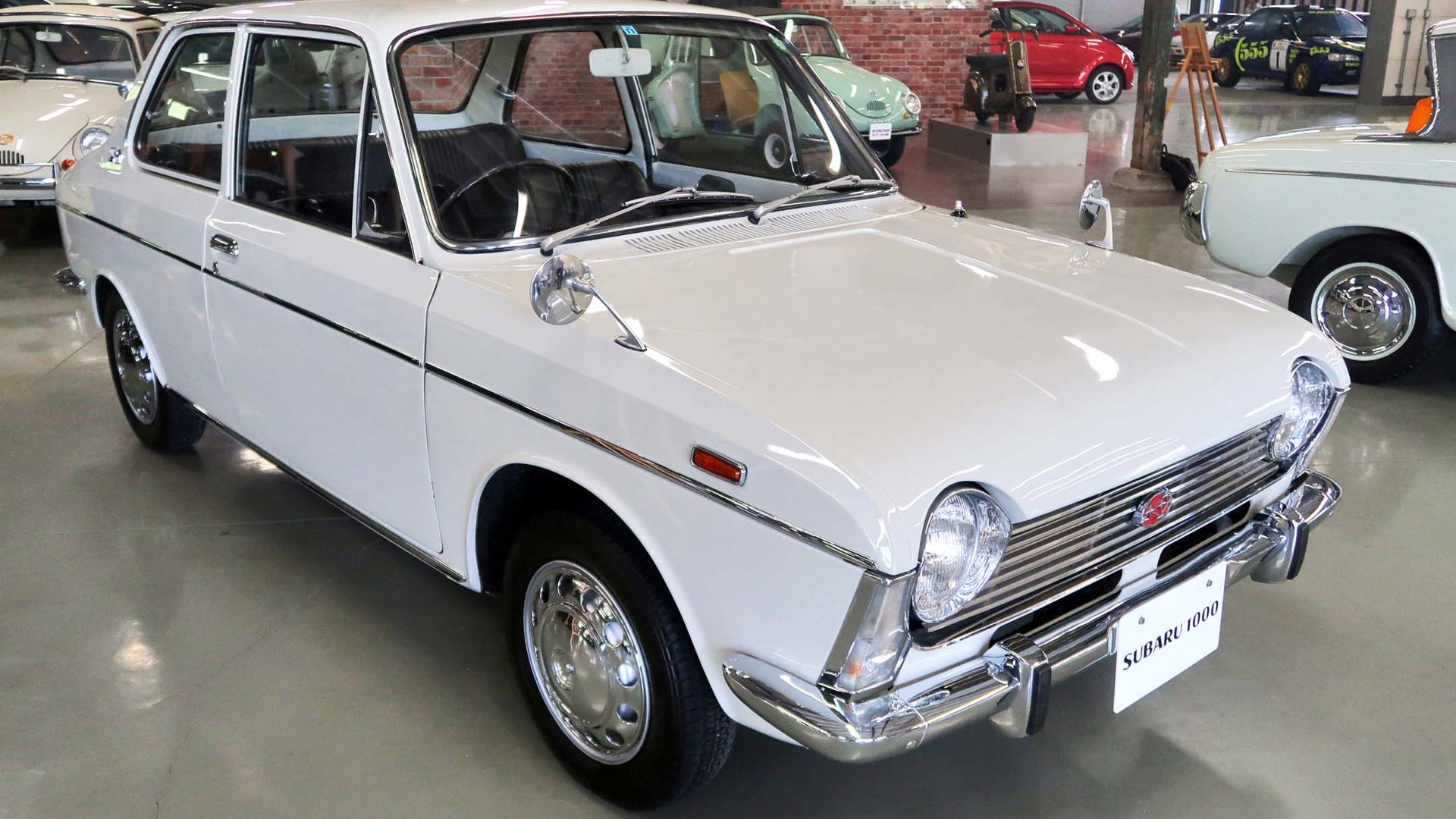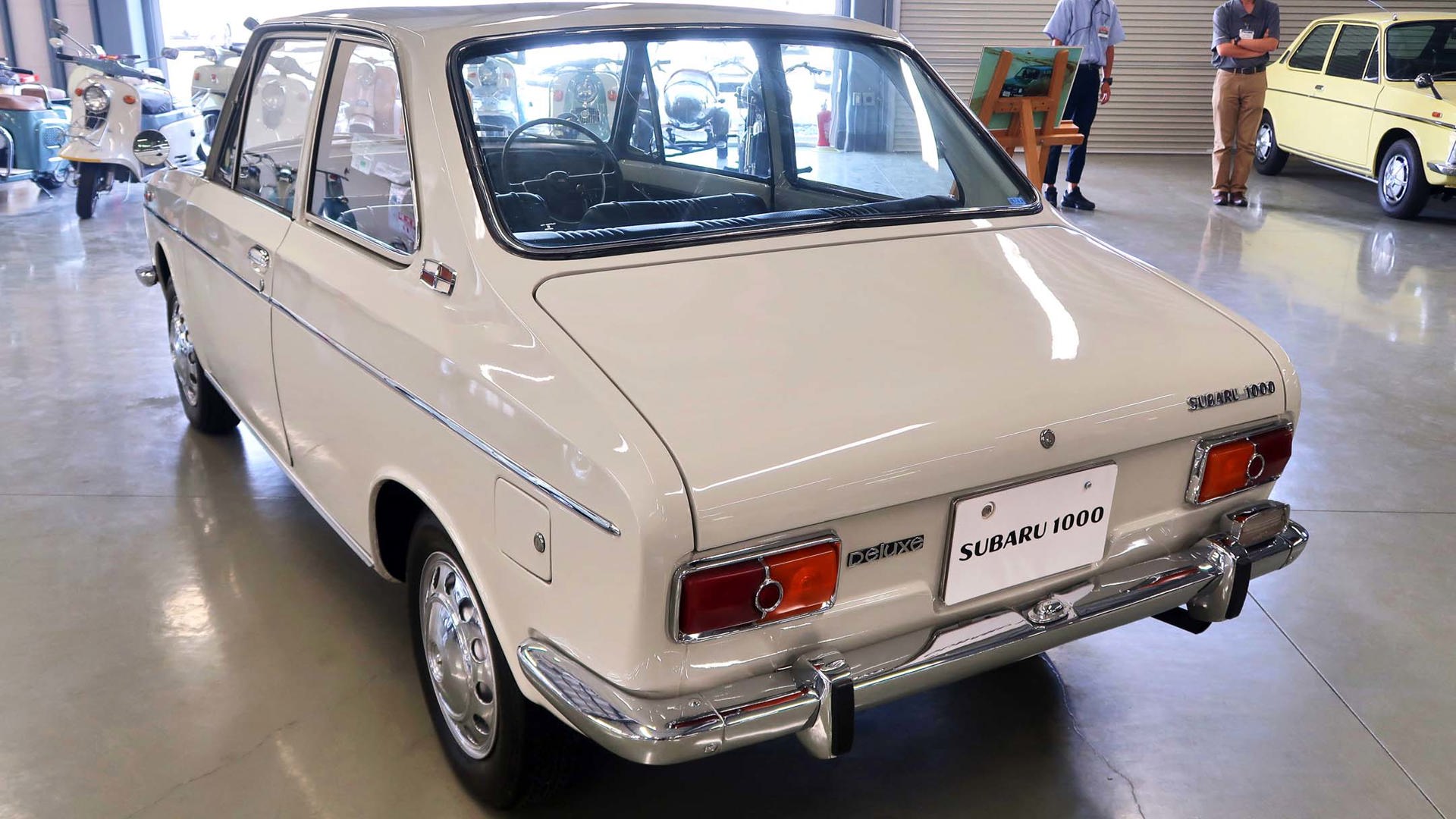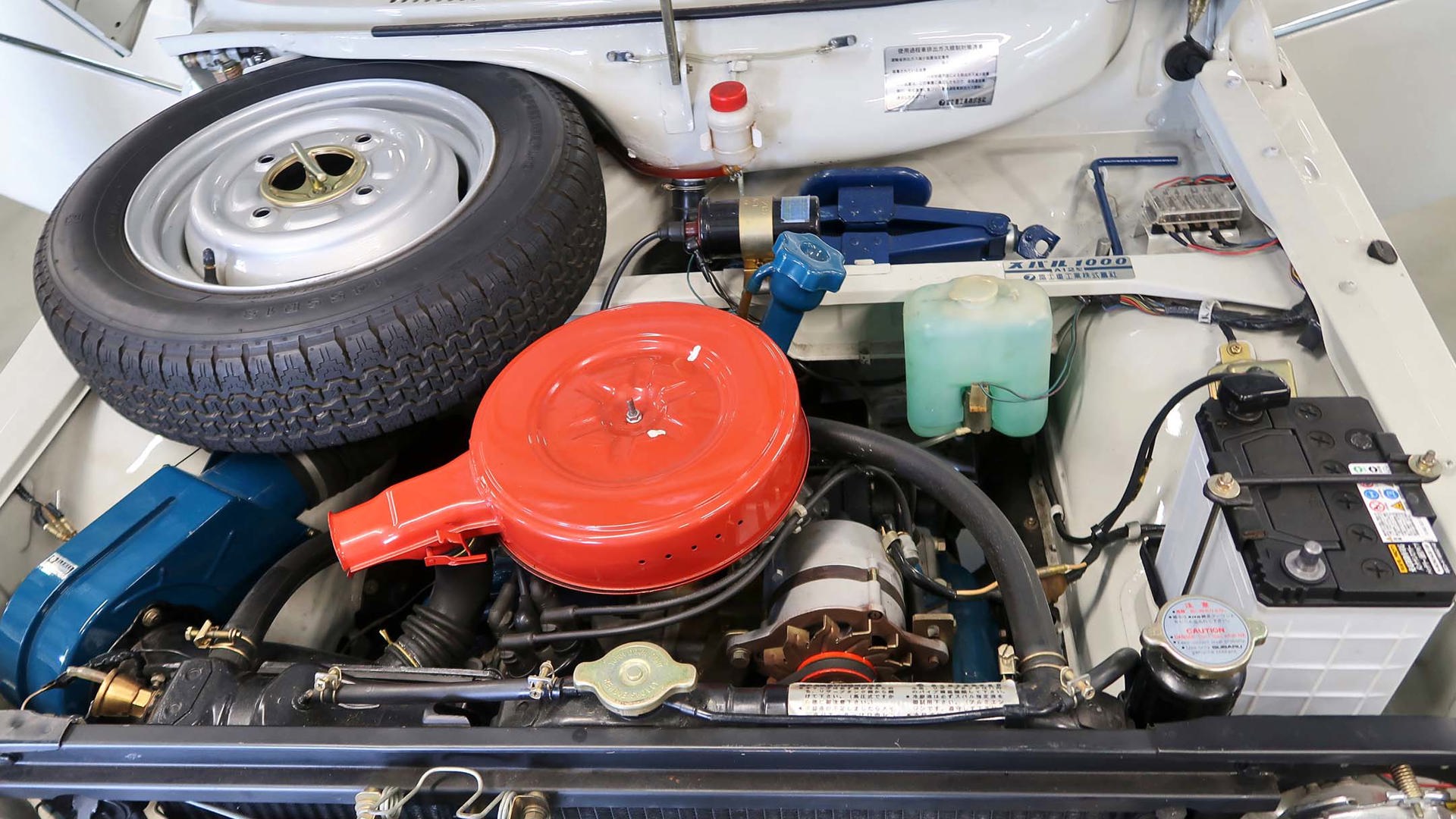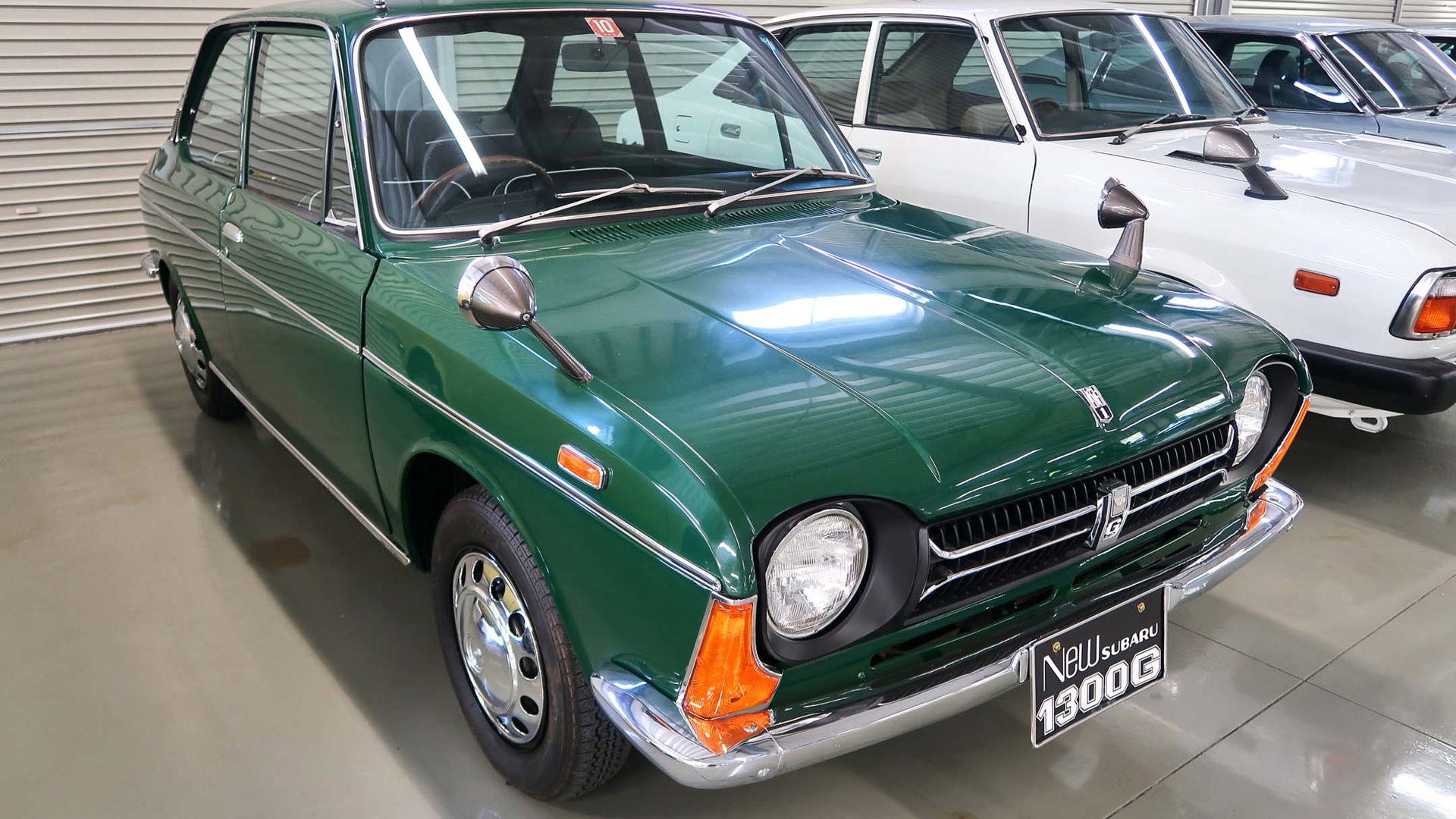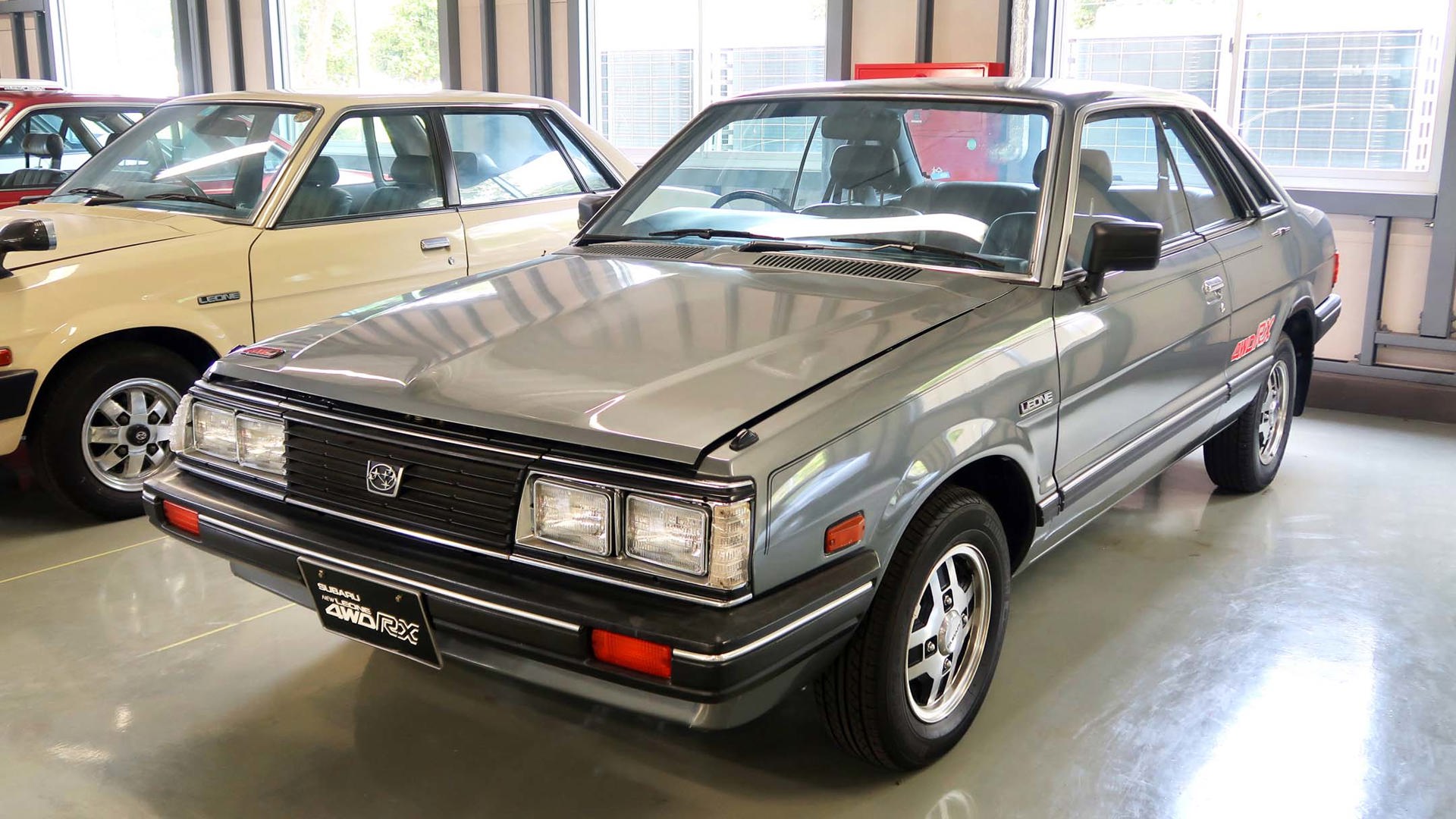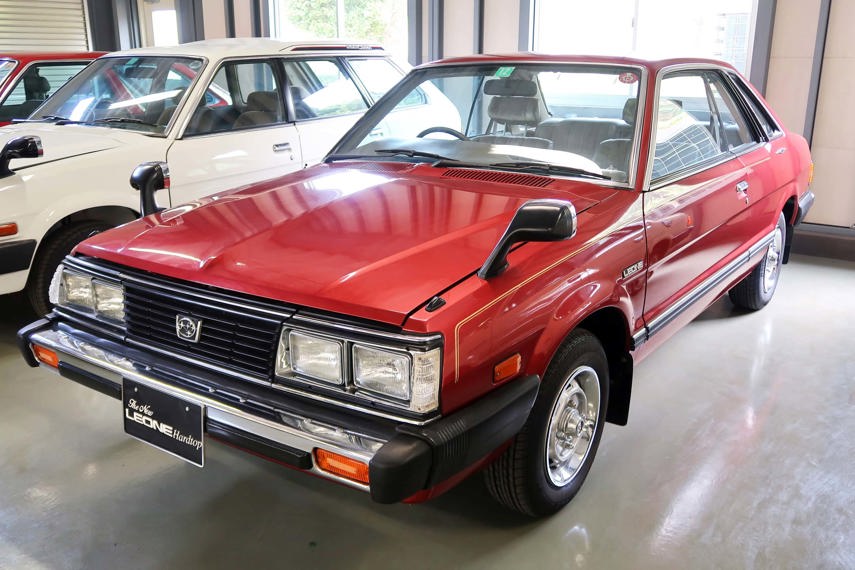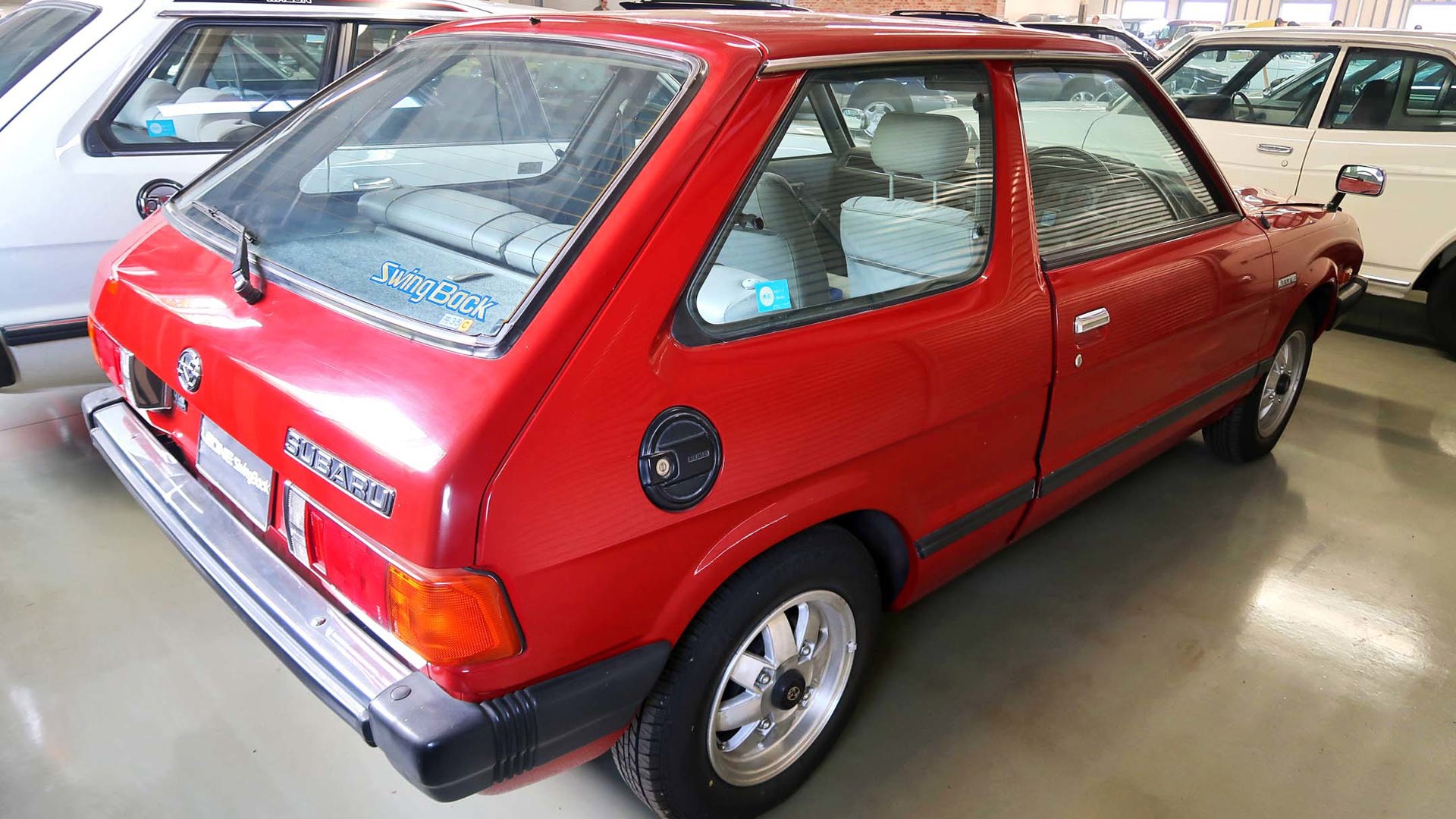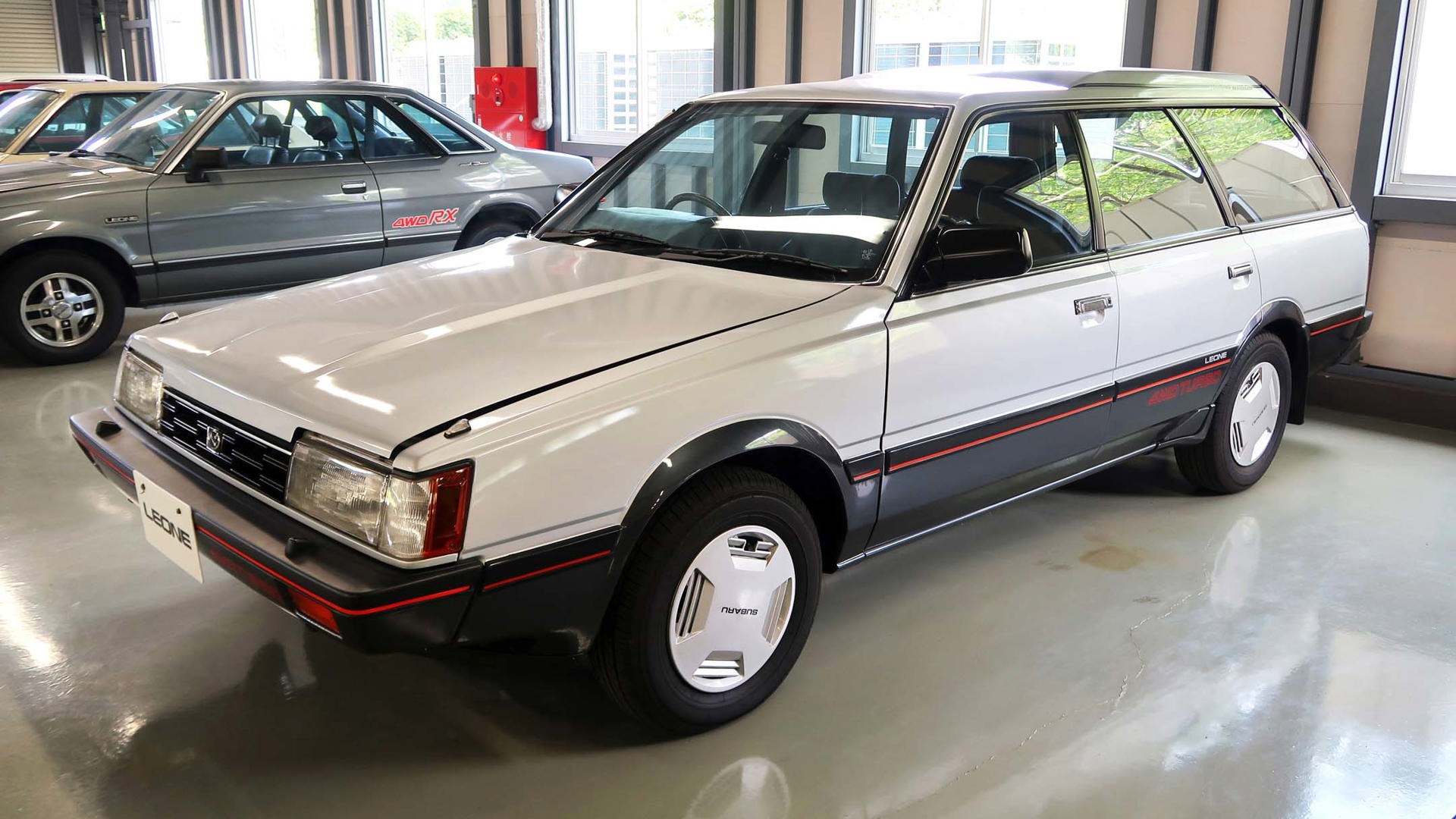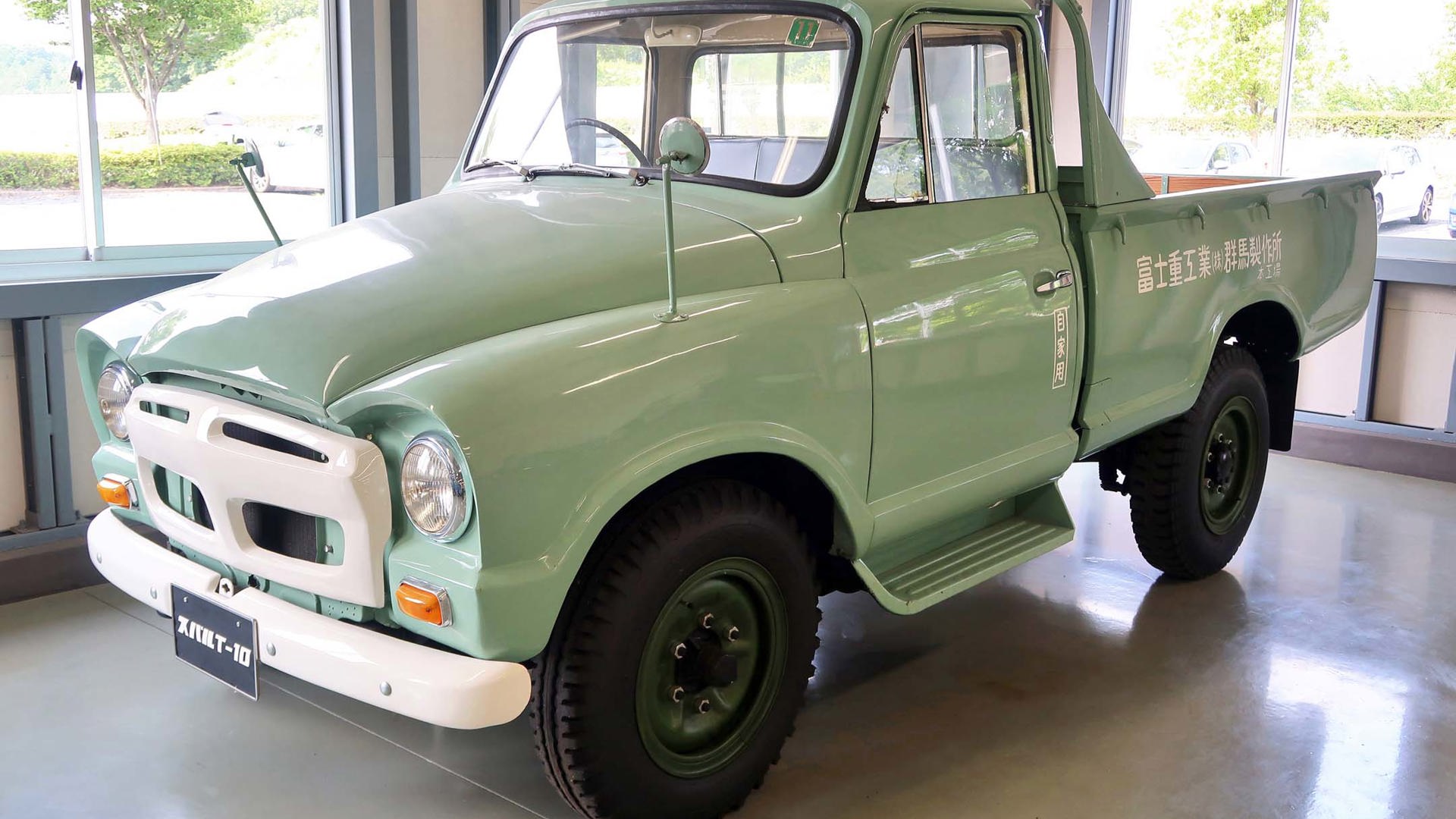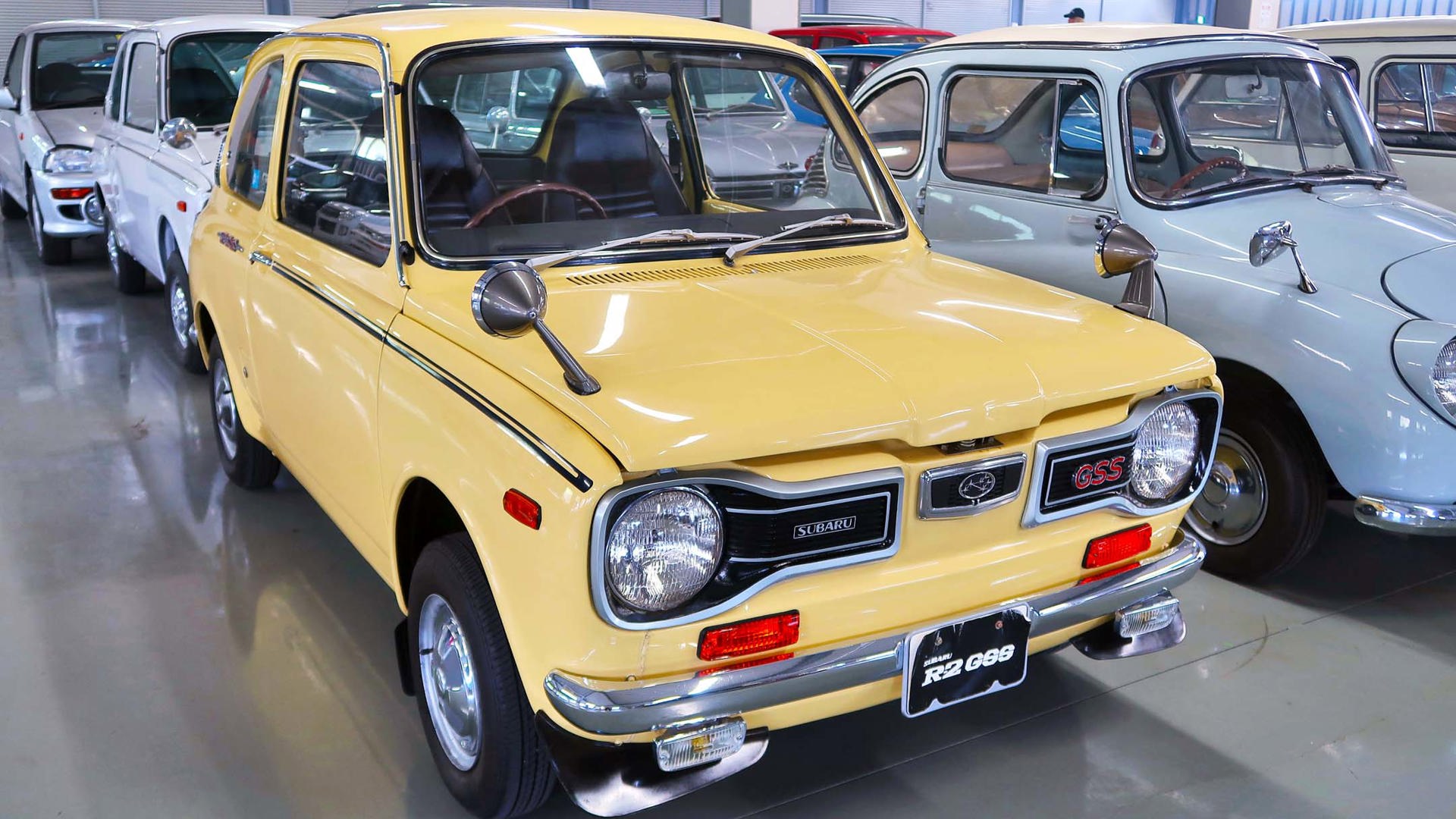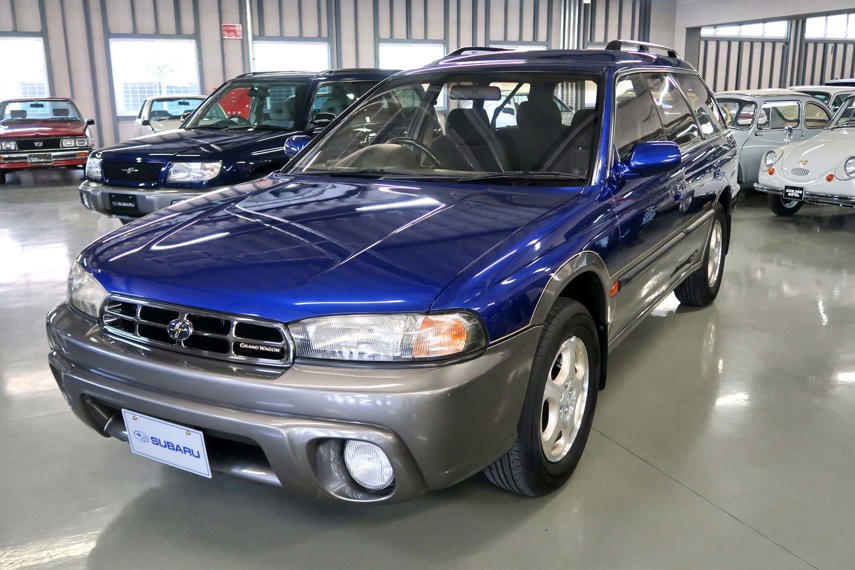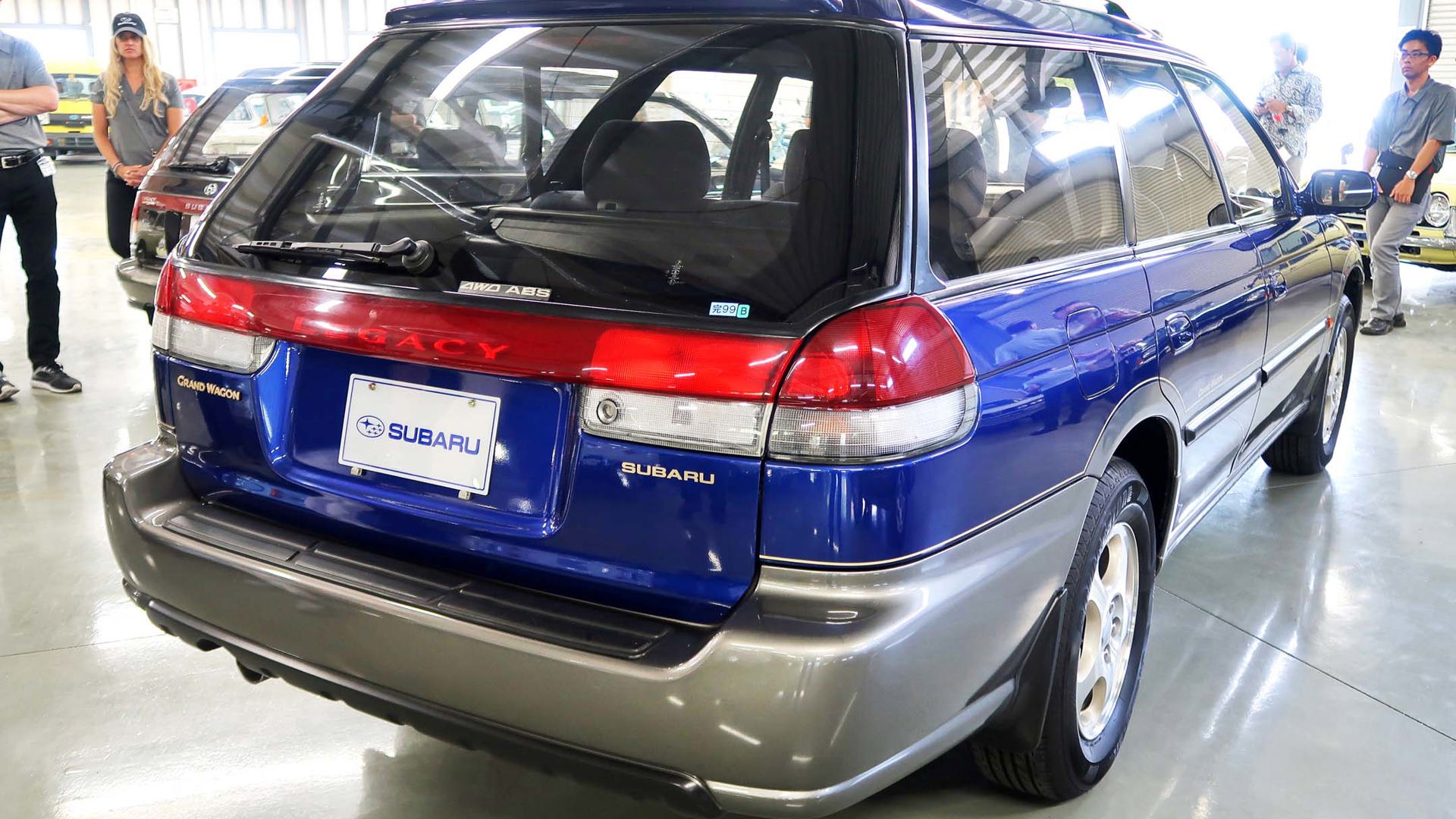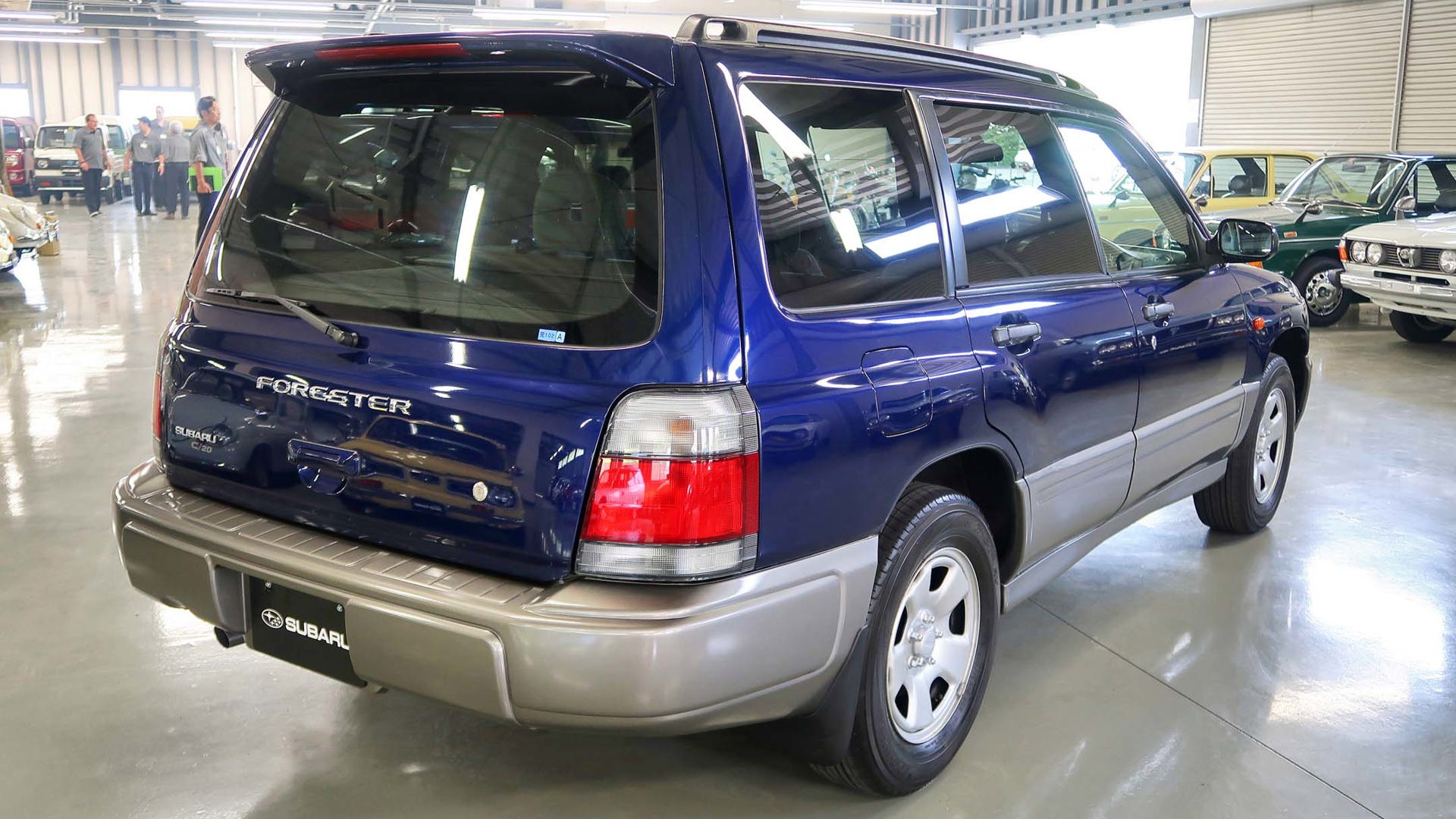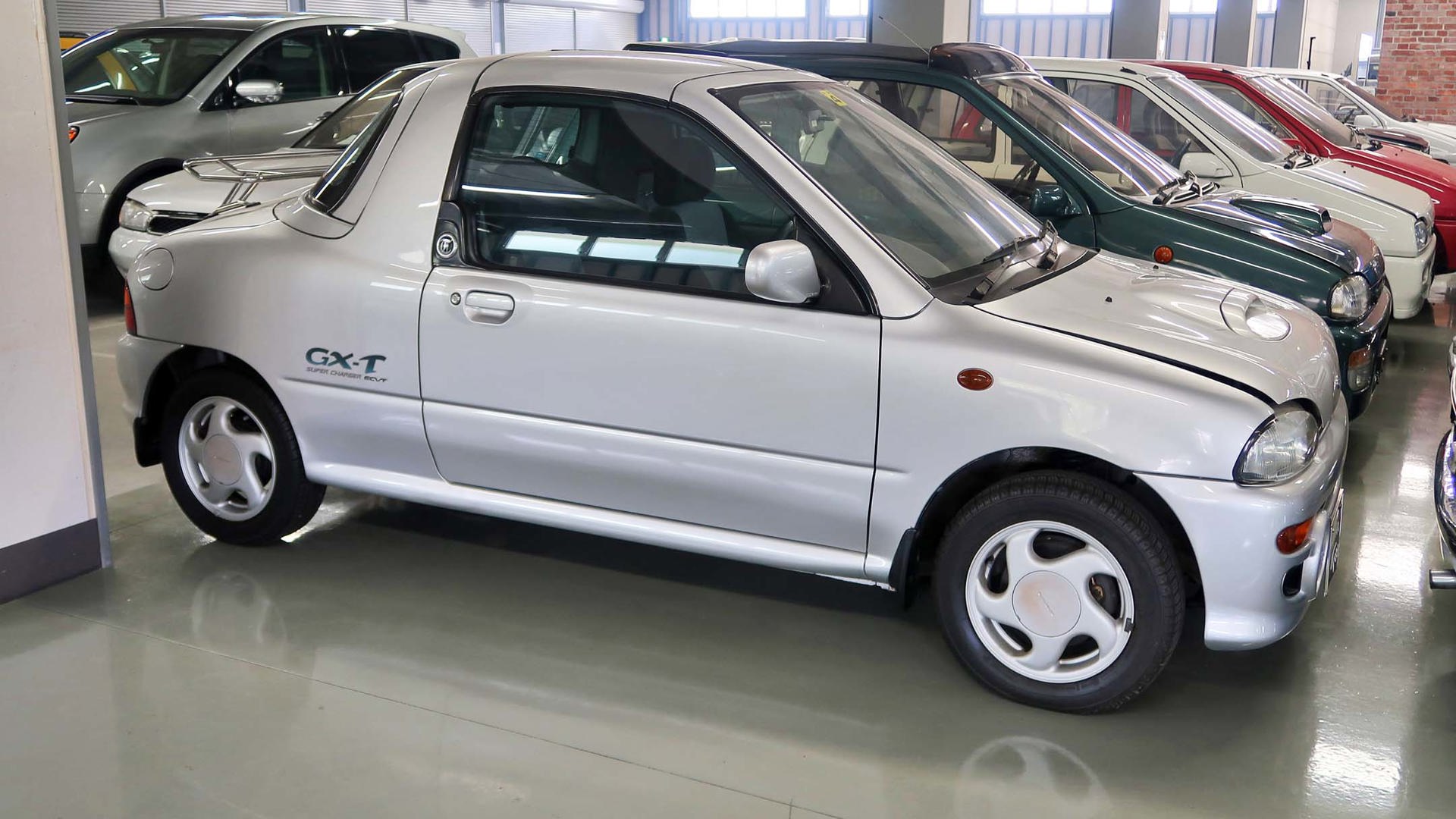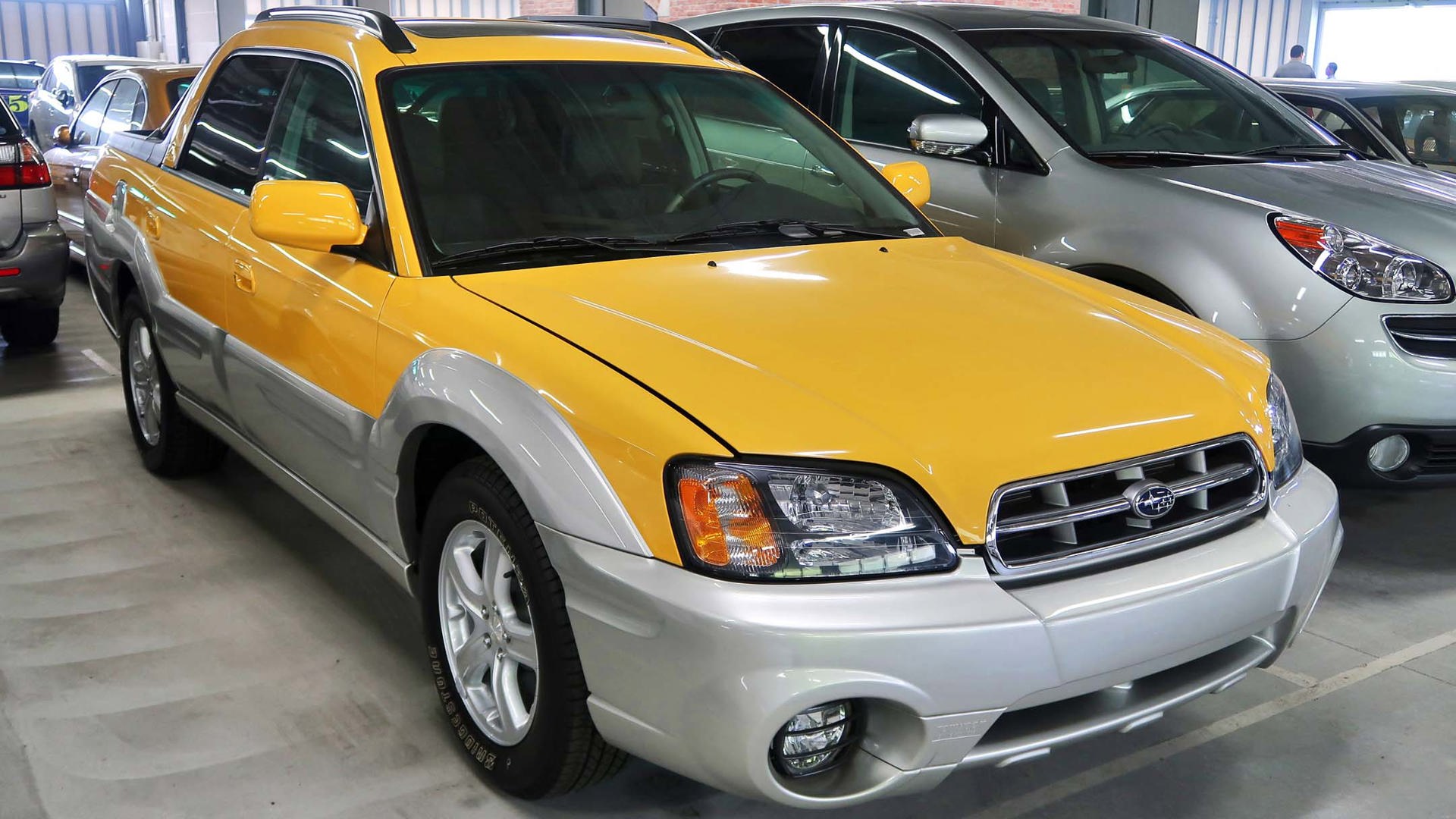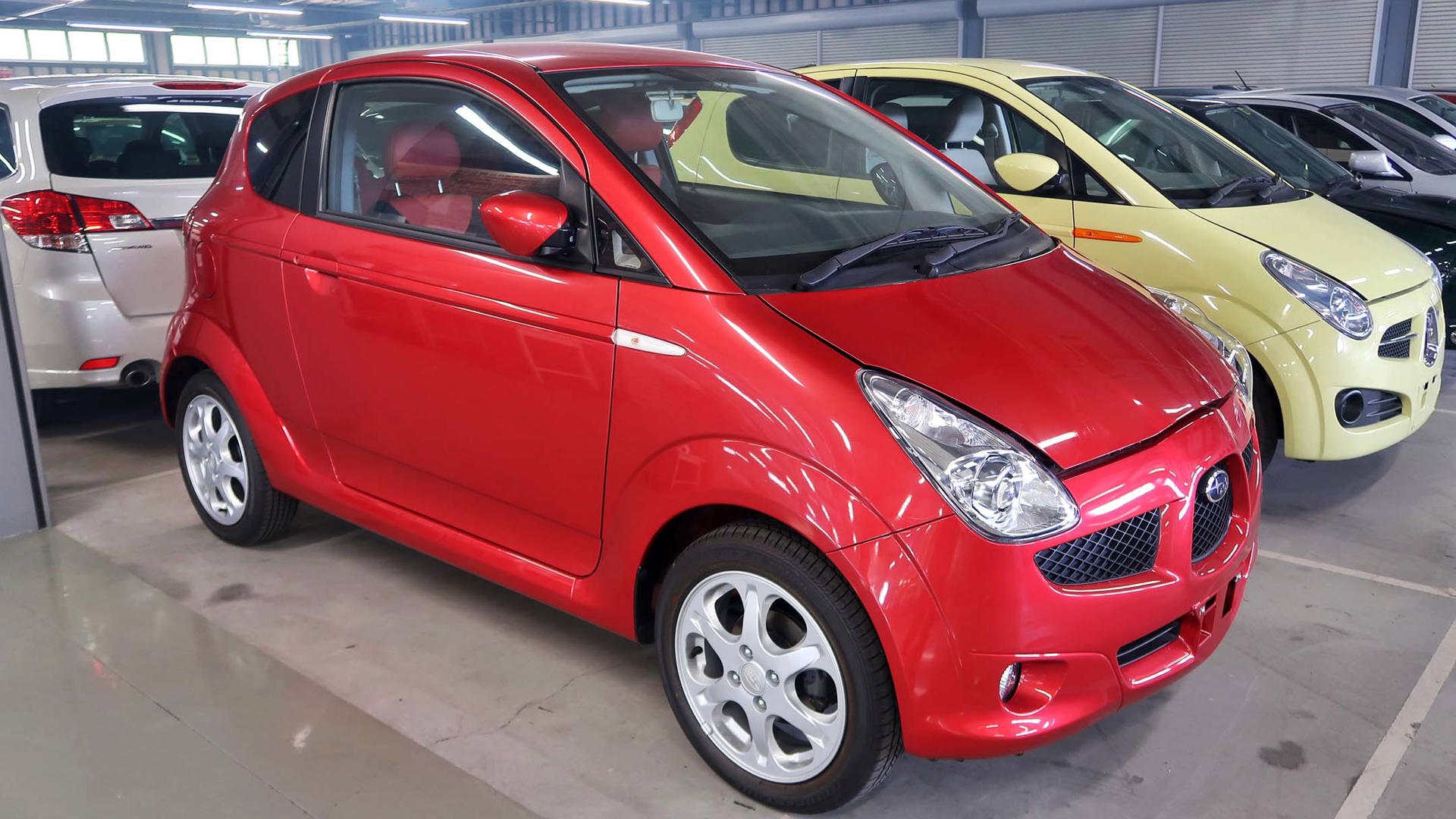TOCHIGI, Japan – Whenever Subaru launches a new model, it has a tradition: it takes one off the assembly line and tucks it away. And they’re almost all here in an otherwise unremarkable warehouse within the company’s proving grounds, itself well-hidden from prying eyes atop a mountain.
The museum is not open to the public, and its primarily function is to preserve Subaru’s history and “vehicle DNA” for its engineers. But it occasionally opens for special guests, and I was recently among a very small of group of Canadian auto writers invited in. It was a special honour, as we were the first from outside of Japan to be able to take photos of what was inside.
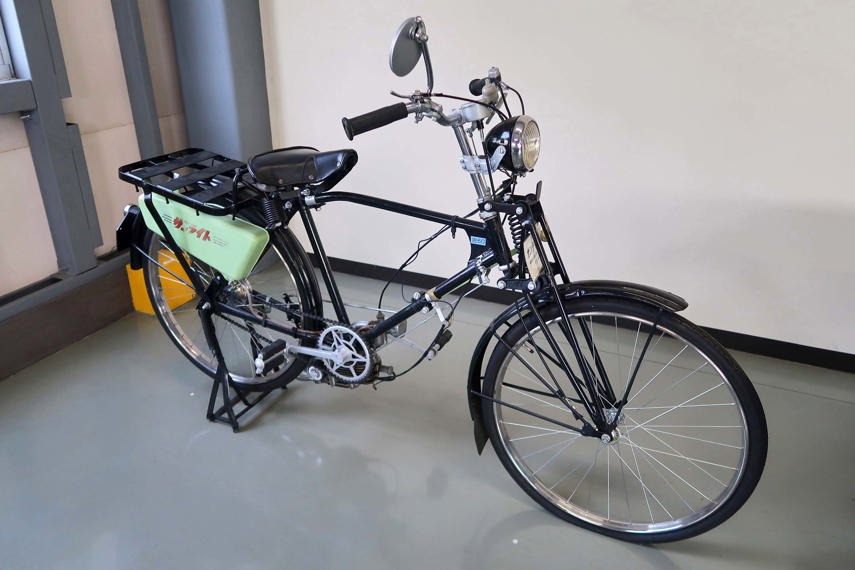 The Itagaki Sunlight motorized bicycle was manufactured by one of the firms which later formed part of Fuji Heavy Industries
The Itagaki Sunlight motorized bicycle was manufactured by one of the firms which later formed part of Fuji Heavy Industries
Like most of the Japanese automakers, Subaru didn’t start out making cars. It traces back to the Nakajima Aircraft Research Center, founded in 1917, the first aircraft manufacturer in the country. It produced both passenger and military aircraft, but was forced to close in 1945 following the end of the Second World War.
Japan’s economy, and its tax and licensing regulations, favoured the production of bicycles and scooters. A new company rose out of five firms that combined to form Fuji Heavy Industries, with a new focus – and a scooter called the Rabbit. The brand name came from a star constellation that we call the Pleiades but the Japanese call Subaru, and which is found on the logo today.
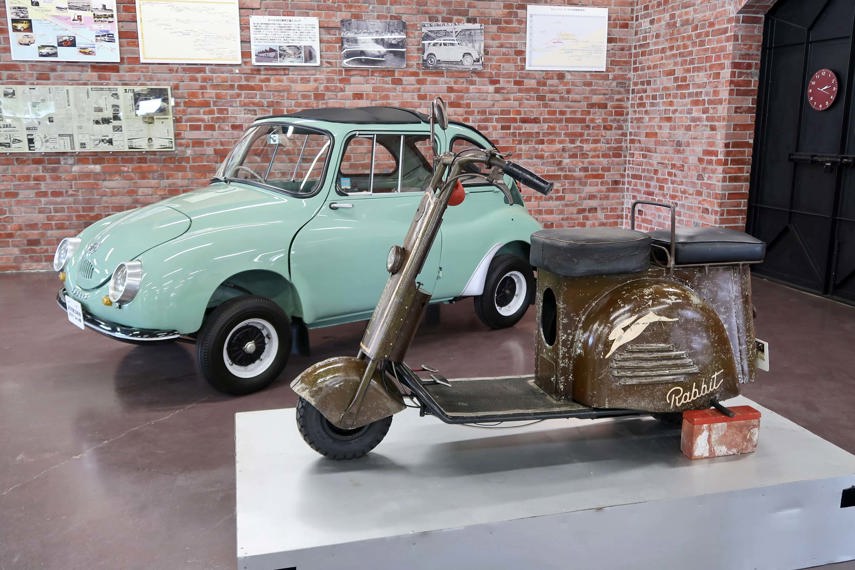 Subaru’s first products, the Rabbit and 360
Subaru’s first products, the Rabbit and 360
The Rabbit was successful, but the company also saw promise in automobiles. In 1954 it developed one it called the Subaru 1500, or P-1. Drawing on its expertise, the company used aircraft technology for the car’s unusual-for-the-day monocoque body. The 1,500 cc engine was in the back and drove the rear wheels. The car was tested at an event held by the Society of Automotive Engineers of Japan, where it was favourably received, but it never went beyond the prototype stage. Only one was ever built and Subaru still owns it, but it’s on display at a visitors’ centre near Tokyo.
At the time, only the very wealthy could afford larger cars. The Japanese government incentivized the “Kei car” mini-car segment with lower taxes and regulations, along with licences available to younger drivers. This was the market Subaru targeted with the new 360, its first production car, introduced for 1958. Its lightweight construction included an acrylic rear window, fiberglass composite roof, and aluminum transmission to help its 360 cc engine move it along – and it could hold four adults. Subaru sold 390,000 of them over the car’s twelve-year production run.
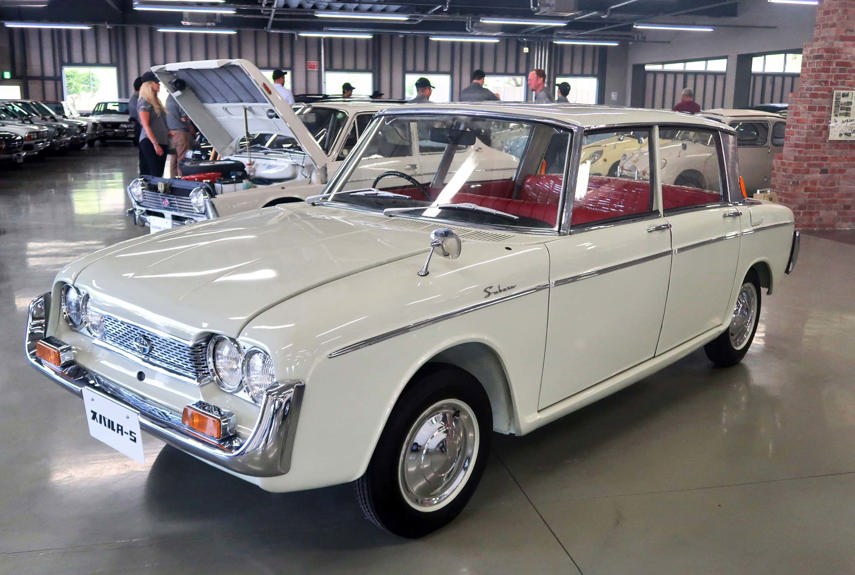 The experimental A5 never went into production
The experimental A5 never went into production
This was also the car that would rather infamously lead to Subaru’s introduction into the United States. American entrepreneur Malcolm Bricklin – who would later become equally infamous in Canada for the failed sports car he tried to build in New Brunswick, leaving taxpayers $23 million in the hole – wanted to import Subaru vehicles after distributing its Rabbit scooter.
Subaru was interested in this new market, but being a small company, it didn’t want to invest the funds into developing a car to meet American crash standards, especially since Toyota and Datsun were still struggling in the same market. Undeterred, Bricklin discovered that the US government didn’t consider anything weighing less than 454 kilograms to actually be a car – and that meant the 360 didn’t have to meet the standards. Its rock-bottom price was attractive at first, but sales tanked when Consumer Reports called it the “most unsafe car” in the country. It took some time and some bigger models before Subaru shook off the stigma there.
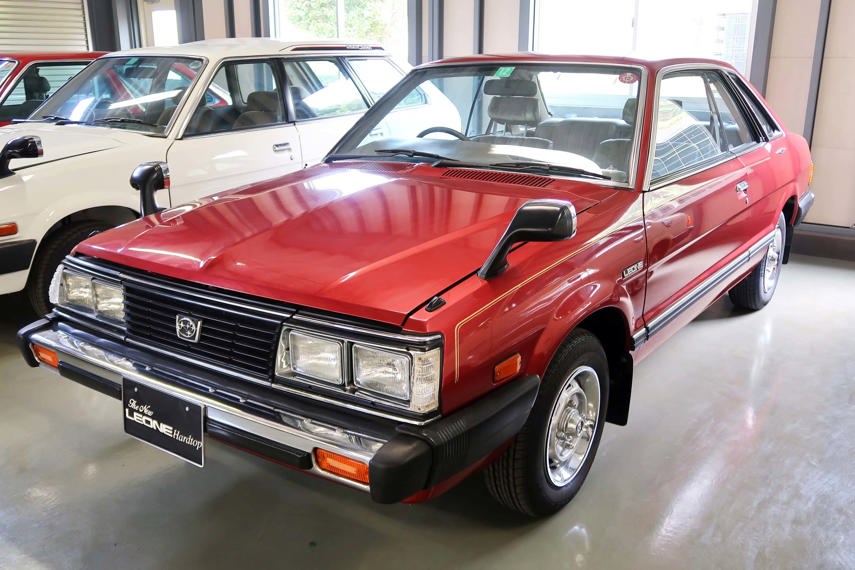 The Leone hardtop
The Leone hardtop
Still, at its American distributor’s request, Subaru began working on a new compact, the A5 of 1963. It was originally conceived as an electric vehicle, but ended up with a gasoline engine due to battery range issues. The A5 was a vital vehicle for Subaru’s ultimate design layout, since its engineers planned a front-mounted engine but didn’t want a driveshaft or rear differential, which reduced interior space. Not only was the A5 front-wheel drive, but the engineers looked at Porsche’s compact engine setup and copied its horizontally opposed “boxer” configuration.
The A5 had other issues to overcome and only four prototypes were built, but it led to the Subaru 1000 of 1966, which the company says carried the world’s first mass-produced aluminum engine. It solved many of the A5’s problems, including a new front suspension that reduced steering effort. It would be sold in the US as the FF-1, for front-engine and front-wheel drive. The driveline would later be adapted for all-wheel drive, and in 1972, Subaru introduced the Leone, the country’s first mass-produced AWD car.
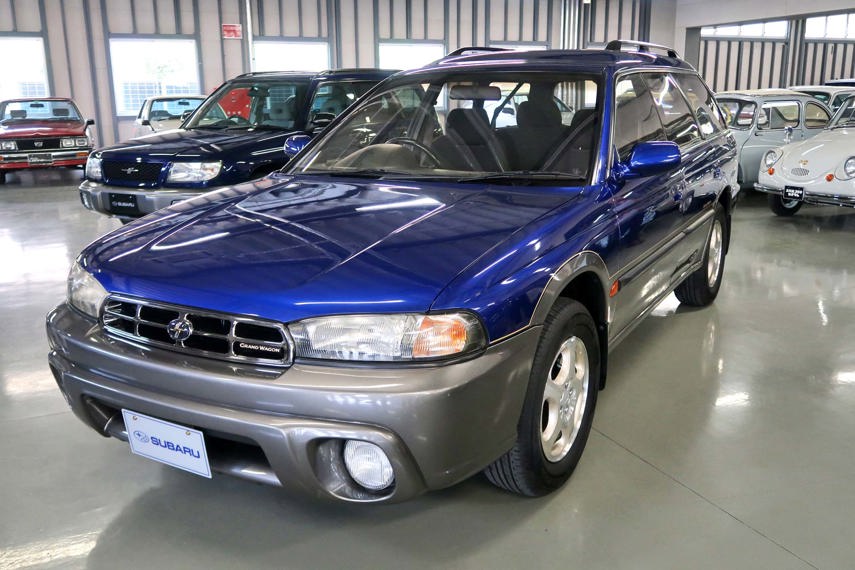 The Legacy Grand Wagon was named the Outback for overseas markets
The Legacy Grand Wagon was named the Outback for overseas markets
In 1989, the company built the Legacy, its first car to be produced in both Japan and the United States. It underwent extensive testing here, including an 18-day endurance course in Arizona where three cars stopped only for gas and driver changes, and set a speed record of 223.345 km/h over 100,000 km.
But it didn’t really stand out in the crowded American market, and Subaru of America asked for an SUV, a segment that was beginning to gain popularity. Subaru beefed up the Legacy, called it the Outback, and with that, the company’s foothold in the North American market was firmly planted. And now, every time you see an all-new model from Subaru, remember that one of them is leaving the factory and going straight to a plain white building on a mountain in Japan.
